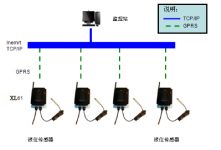
Hunan Changsha River Water Level Wireless Monitoring Project
[ad_1]
Hunan Changsha River Water Level Wireless Monitoring Project, in simple terms, is the application of our company’s wireless products in water level and other related data collection and transmission applications. The main products used are XL61 smart sensors, auxiliary smart gateways, sensor components at various nodes, and wireless measurement and control devices.
XL61 smart sensor
1) Uplink communication: GPRS.
2) Communication protocol: MODBUS, WSNXL, transparent transmission (serial port input) protocol.
3) Input and output: support 4-20mA, voltage signal, switch value, etc.
4) Power supply mode: DC5V power supply, optional battery power supply.
5) Protection level: IP66, explosion-proof enclosure is optional.
6) Downstream interface: pressure, flow, liquid level, temperature, etc.
The realization of the water level monitoring project:
Changsha wireless river water level monitoring, Xinli Technology uses wireless sensor network technology as the core technology basis, selects smart gateways, smart sensors and other equipment, with high-quality sensor elements, collects the river’s liquid level pressure and equipment 485 interface parameters, through wireless means Uploaded to the smart gateway, the gateway processes the data from the received wireless sensor nodes (smart sensors, pressure sensors, liquid level sensors), and then processes the data through wired (ETHNET, RS232, RS485) or wireless (WI-FI, GPRS) ) To upload the data to the monitoring center server.
The monitoring center server is installed with a monitoring configuration software system. After analyzing and processing the data transmitted from the smart gateway, the parameters of all data monitoring points in the pipeline network are displayed or controlled intuitively. According to the requirements of users, the data is stored, and various reports, graphs, trend graphs, etc. are made.
When you need to add new monitoring points, you only need to add the corresponding wireless sensors and configure the new points on the monitoring system, which is convenient and fast, saves cost and time, and has good scalability. For third-party smart devices, such as plc, electric meters and other devices with 485 interface, these smart devices can be easily and quickly connected to the wireless sensor network through a wireless converter.
If the monitoring parameters of the pipe network are abnormal and some equipment needs to be started, such as valves, motors and other equipment, wireless measurement and control devices can be used. In an emergency, the emergency equipment can be started wirelessly without pulling cables.
System structure diagram:


[ad_2]



